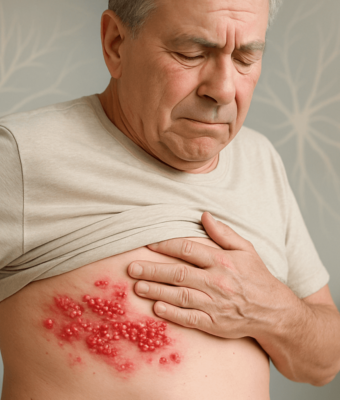Introduction
In medicine, progress is an unstoppable force that continually uncovers new ways to diagnose, treat, and ultimately overcome diseases. Nuclear Medicine Therapy stands out as an exceptional innovation among these advancements. Combining precise targeting methods and the power of radiation, it introduces a new level of therapeutic potential. This modern approach could revolutionize how we address various medical conditions.1,2.
Nuclear medicine therapy is a pioneering field within medicine that employs radioactive materials to combat various conditions, including cancer and thyroid disorders. Unlike traditional methods like surgery or chemotherapy, this treatment works on a deep level, directly impacting the cells causing the problem. At its core is radiopharmaceutical, an energy source placed within the body. Carefully chosen for its ability to reach certain organs, tissues, or molecules precisely, this energy envoy aims to provide healing on a highly individualized level.1
Understanding Nuclear Medicine Therapy
Nuclear medicine is a specialized radiology branch focused on the diagnostic and therapeutic application of radioactive substances, known as Radiopharmaceuticals. This field employs atomic medicine imaging to scrutinize the inner workings of organs, determine their structure and function, and facilitate the early identification of anomalies or illnesses. Specific cancer types and disorders also find treatment through this medical discipline.3
In the diagnostic context, a minute quantity of radioactive materials is deployed to enhance the visual clarity of organs during procedures. Nuclear medicine therapy empowers physicians to pinpoint irregularities, assess tumour size, and ascertain physiological or functional issues within the organ.2
Furthermore, this technique proves invaluable for tracking the progression of ailments and gauging the efficacy of treatments. The therapeutic aspect involves the introduction of radiopharmaceutical compounds into patients, followed by imaging via PET (Positron Emission Tomography) or SPECT (Single Photon Emission Computed Tomography) cameras. These advanced devices decode the emitted spectra of the administered radiopharmaceuticals, enabling detailed insights into the body’s internal processes.1,4.

Radiopharmaceuticals comprise a radioactive compound, a targeting molecule, and a connecting linker that binds the two components together.3
Types of Nuclear Medicine Therapy2
Nuclear medicine therapies encompass various treatments, including:
- Radioactive iodine (I-131) therapy addresses thyroid cancer and hyperthyroidism.
- I-131 MIBG (metaiodobenzylguanidine labelled with radioactive iodine) treatment is utilized for neuroendocrine tumours such as paragangliomas, pheochromocytomas, and infantile neuroblastoma.
- Lu-177 dotatate, or Peptide Receptor Radionuclide Therapy (PRRT), is applied to manage advanced neuroendocrine tumours affecting the digestive tract in adult patients (GEP-NETs).
- Radium-223 dichloride, Samarium-153 lexidronam, and Strontium-89 chloride all alleviate pain from tumour metastases to the bones.
- Radioimmunotherapy (RIT), where laboratory-crafted monoclonal antibodies target and attach to cancer cells.
- Yttrium-90 Ibritumomab Tiuxetan (Y-90) is a treatment for various sub-types of lymphoma, particularly Non-Hodgkin B-cell lymphoma (NHL) in newly diagnosed patients or those who haven’t responded to conventional therapies. The development of novel radioimmunotherapy agents is also underway, some of which are in clinical trials.
How is Procedure Performed?

Imaging2
- Nuclear medicine tests are typically outpatient procedures, although they can also be conducted in a hospital setting.
- During the test, the patient will lie on an exam table, and a nurse or technologist will insert an IV catheter into a vein in the hand or arm. The radiotracer will be introduced into the body through injection, ingestion, or inhalation as a gas.
- The radiotracer collects in interest as it moves through the body. The time this accumulation takes varies based on the test, ranging from seconds to days. The doctor will provide details on the imaging start time and procedure duration.
- When imaging begins, a camera or scanner captures images. The camera may rotate around the patient or remain stationary. Adjusting position may be necessary, with moments of stillness required. Sometimes, the camera moves close to the body for better image quality. Patients must inform the technologist if they are claustrophobic.
- Certain cases involve tests to measure radioactivity levels in blood, urine, or breath. This might entail a technologist using a handheld probe.
- Nuclear medicine test duration varies widely, with imaging lasting 20 minutes to several hours. Patients’ specific circumstances could extend the trial over multiple days.

Therapy2
- Unlike intravenous injections, most nuclear medicine procedures are painless and cause minimal discomfort or side effects.
- Patients might experience a slight pinprick sensation when the technologist inserts the needle into their vein during intravenous injection.
- After radionuclide therapies and I-131 radioiodine treatment, the technologist or nurse will provide specific safety instructions once they return home.
Radionuclide therapies can also lead to side effects. A few are enlisted below:
- Lu-177: Vomiting, nausea, reduced blood cell counts, elevated liver enzymes, decreased blood potassium, and increased blood glucose levels.
- I-131 MIBG: High blood pressure, nausea, and a decrease in platelet levels.
- Yttrium-90: Nausea, stomach pain, diarrhea, fever, cough, nasal congestion, sore throat, sinus discomfort, weakness, and fatigue.
- Radium-223: Diarrhea, nausea, low blood cell levels.
- Strontium-89: Dark stool, blood in urine or stool, cough, fever, lower back or side pain, difficult urination, red skin spots, unusual bleeding, or bruising.
- Samarium-153: Reduced bone marrow function, low platelet and white blood cell levels, nausea, vomiting.2
Challenges and Future Directions
Despite its promise, nuclear medicine therapy also faces challenges. Regulatory approvals, safety concerns, and logistical issues related to the production and handling of radiopharmaceuticals remain areas of concern. Furthermore, the availability of specialized equipment and trained personnel can limit its widespread adoption.4
Collaboration between medical professionals, researchers, and regulatory bodies will be essential to overcome these challenges. Advances in imaging technology, radiopharmaceutical development, and treatment delivery techniques will expand nuclear medicine therapy’s reach.3,4.
Conclusion
Nuclear medicine therapy represents a revolutionary approach to medical treatment, harnessing the power of radiation for targeted therapy. Its ability to provide precise treatments tailored to individual patients’ needs holds great promise for improving the outcomes of various medical conditions. As research and technology continue to evolve, nuclear medicine therapy may play an increasingly significant role in healthcare, ultimately revitalizing our approach to disease treatment and transforming patients’ lives worldwide.1,4.
References
- Chai-Hong Yeong, Mu-hua Cheng, and Kwan-Hoong Ng. Therapeutic Radionuclides in Nuclear Medicine: Current and Future Prospects. Journal of Zhejiang University-SCIENCE B (Biomedicine & Biotechnology). October 2015. 15(10): 845–863. DOI: 10.1631/jzus.B1400131
- General Nuclear Medicine. Accessed August 8, 2023. Available at: https://www.radiologyinfo.org/en/info/gennuclear
- Radiopharmaceuticals: Radiation Therapy Enters the Molecular Age. National Cancer Institute. Accessed August 8, 2023. Available at: https://www.cancer.gov/news-events/cancer-currents-blog/2020/radiopharmaceuticals-cancer-radiation-therapy
- About Radiopharmaceutical Therapies. Society of Nuclear Medicine and Molecular Imaging. Accessed August 8, 2023.Available at: http://www.snmmi.org/Patients/About/content.aspx?ItemNumber=14792&navItemNumber=14793






